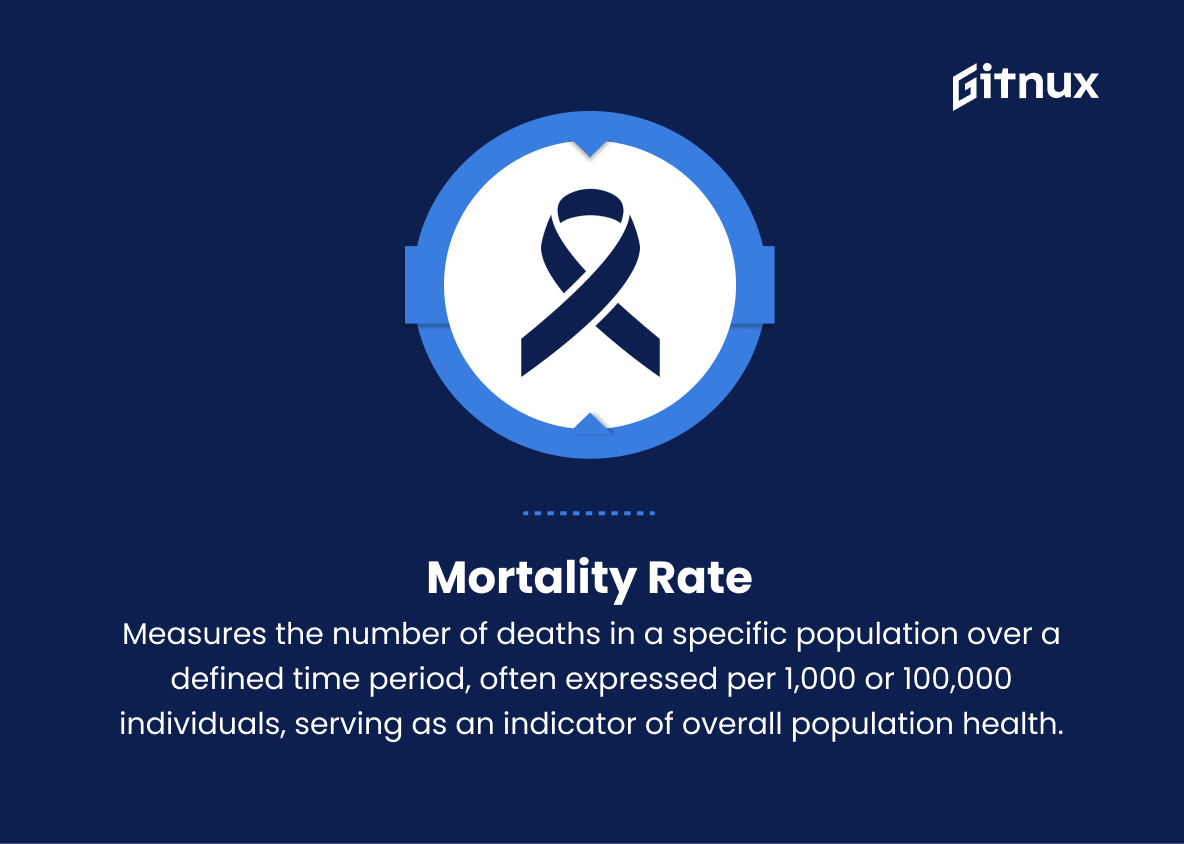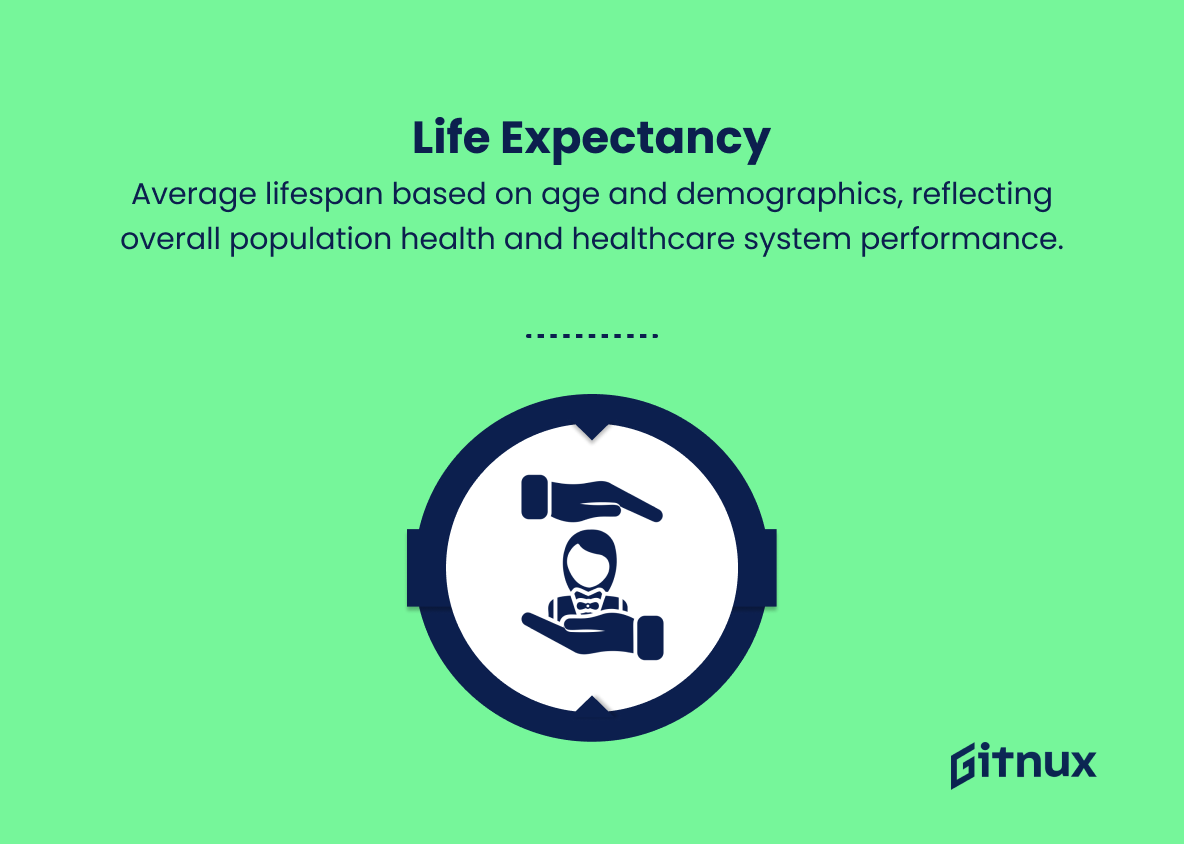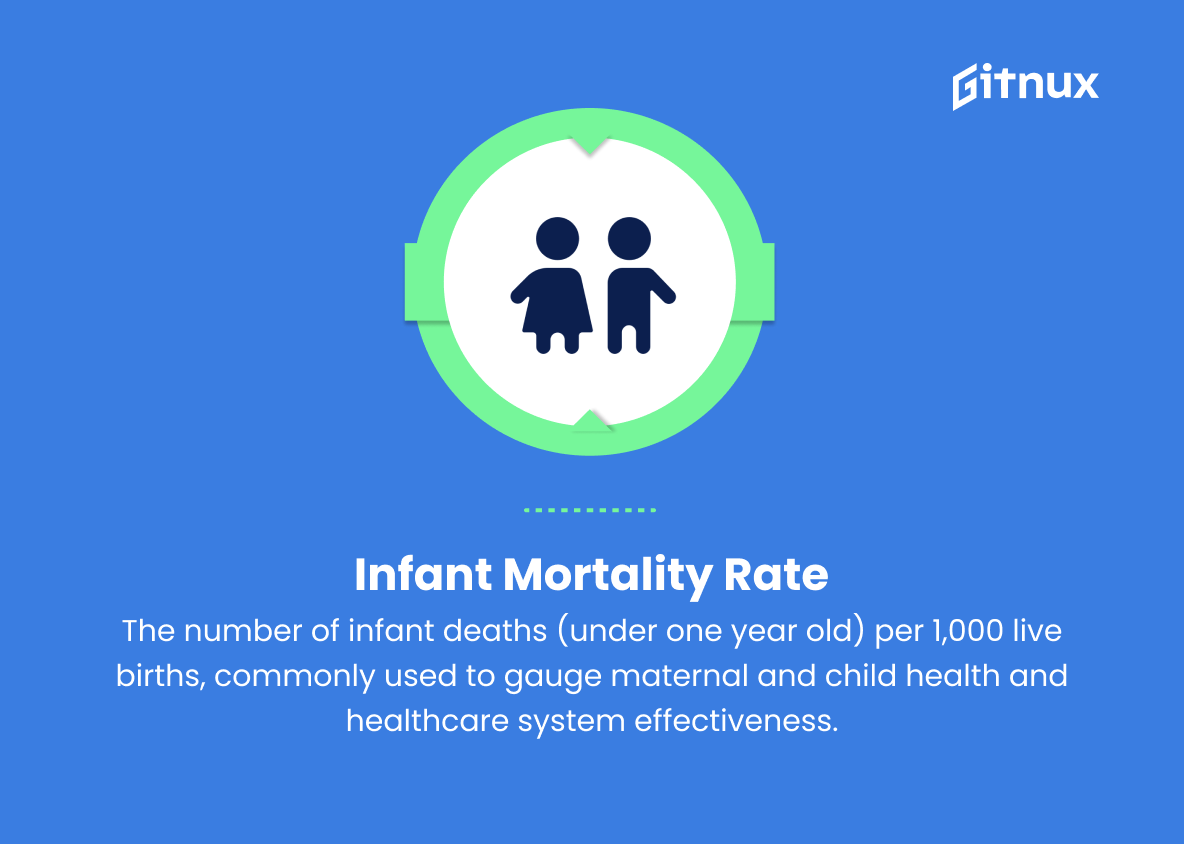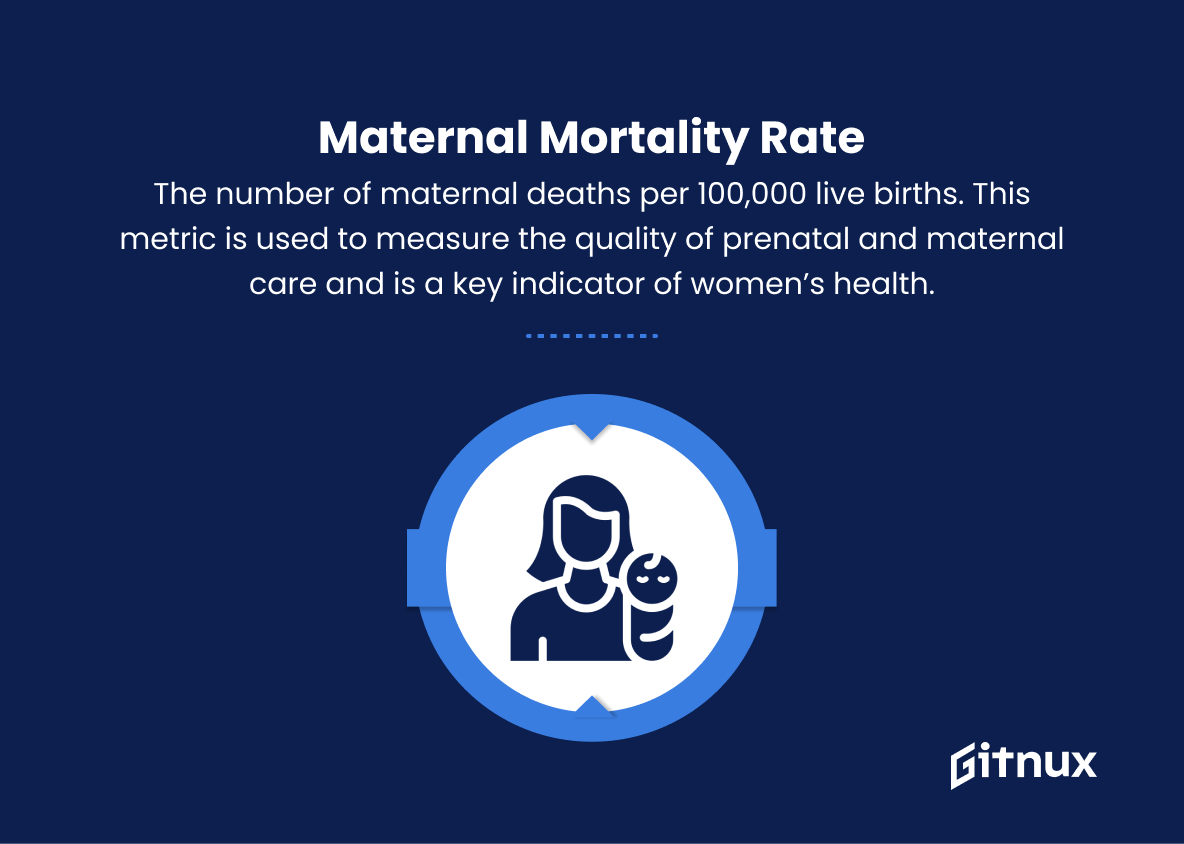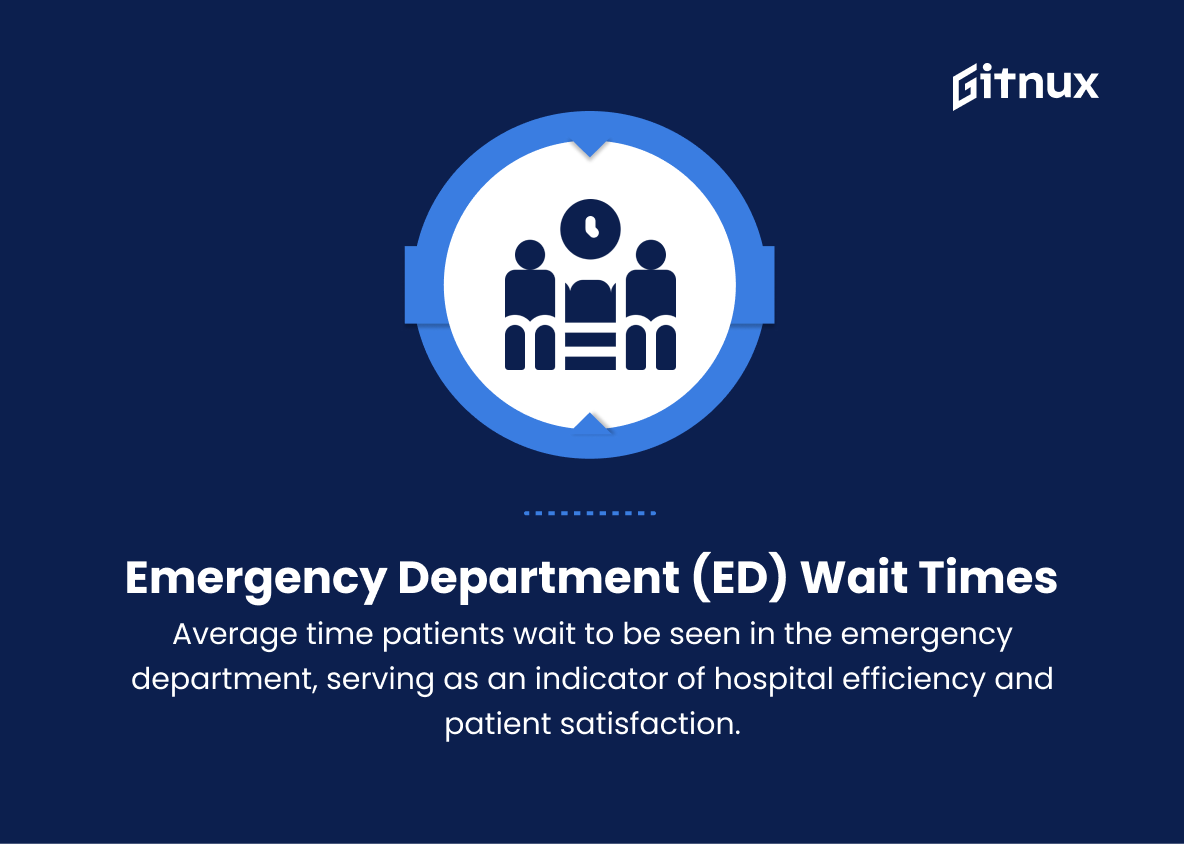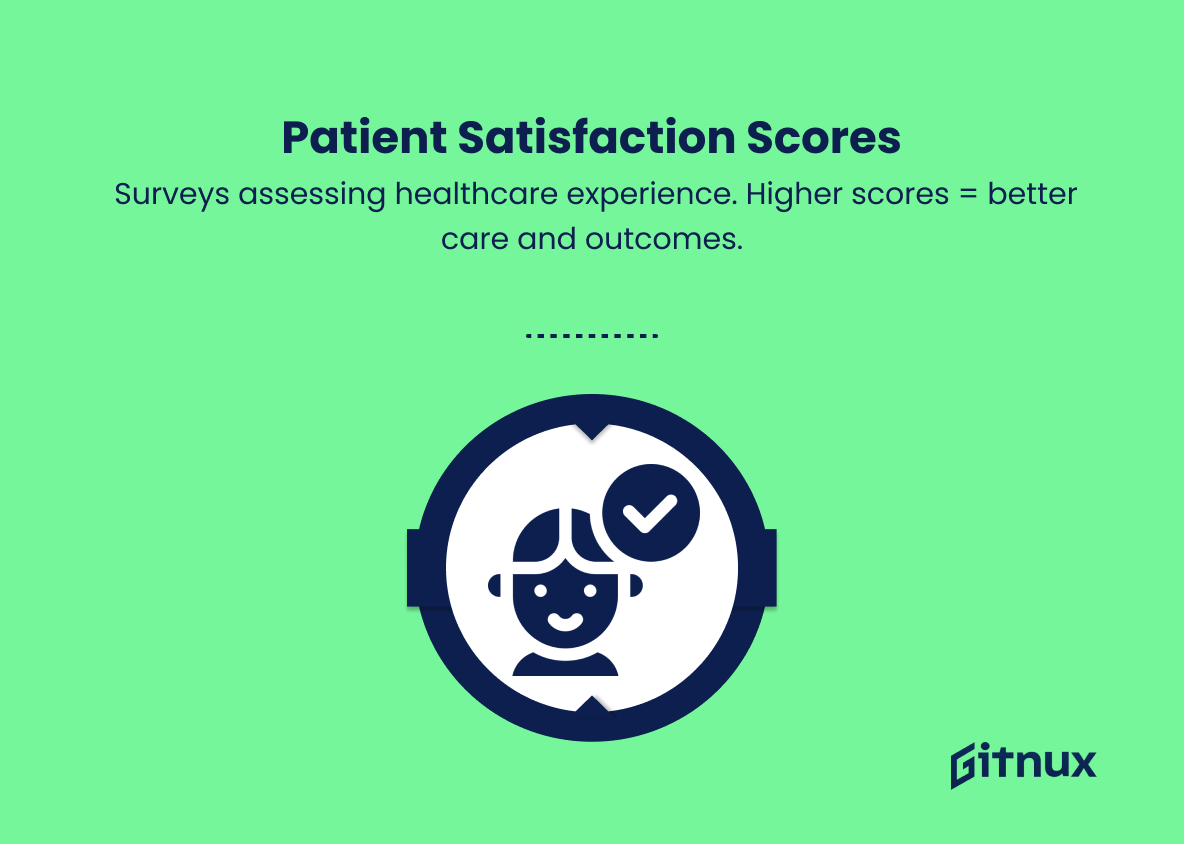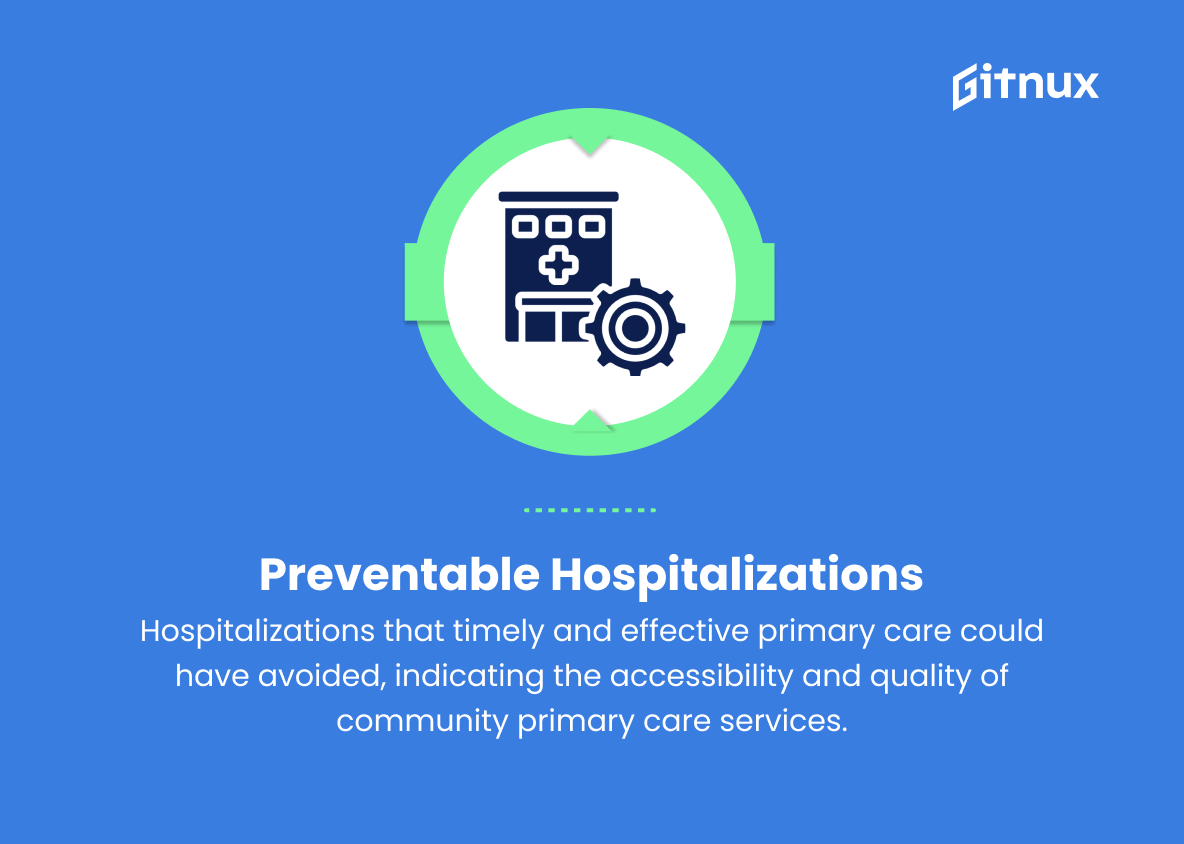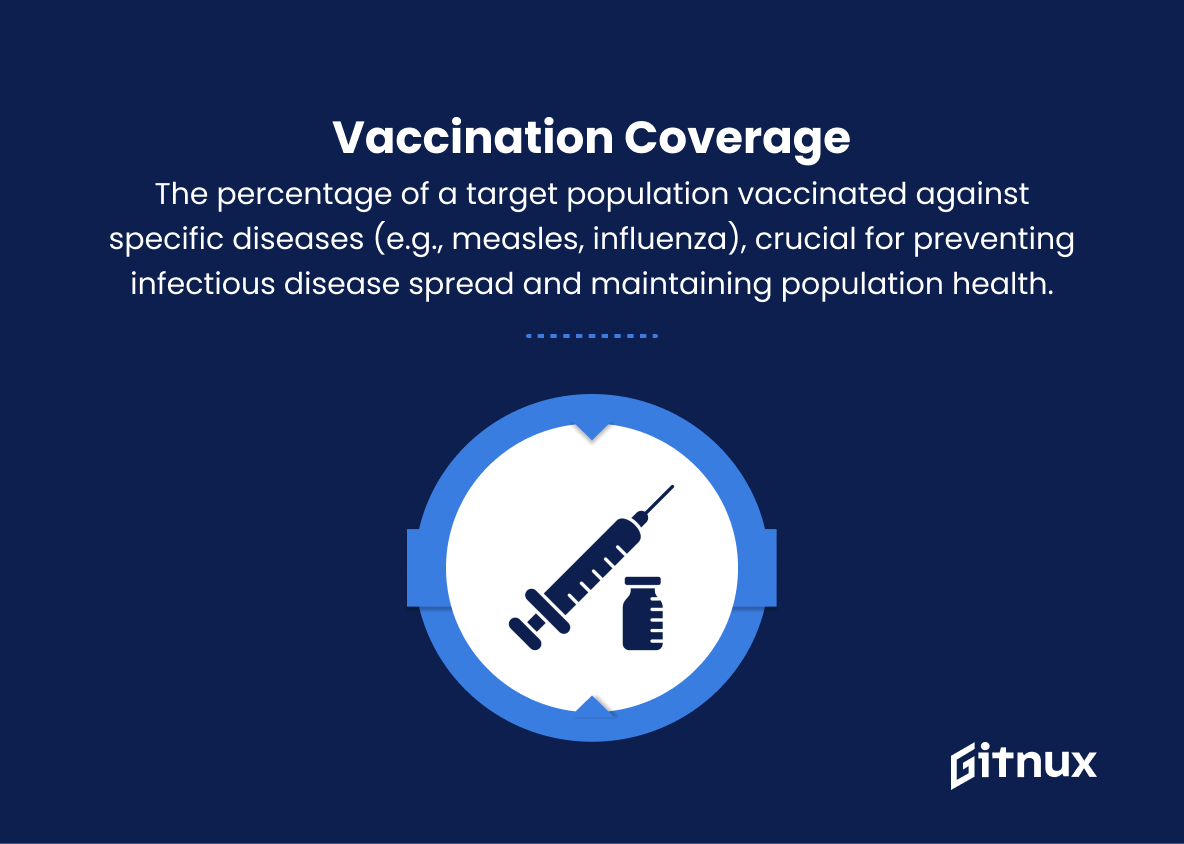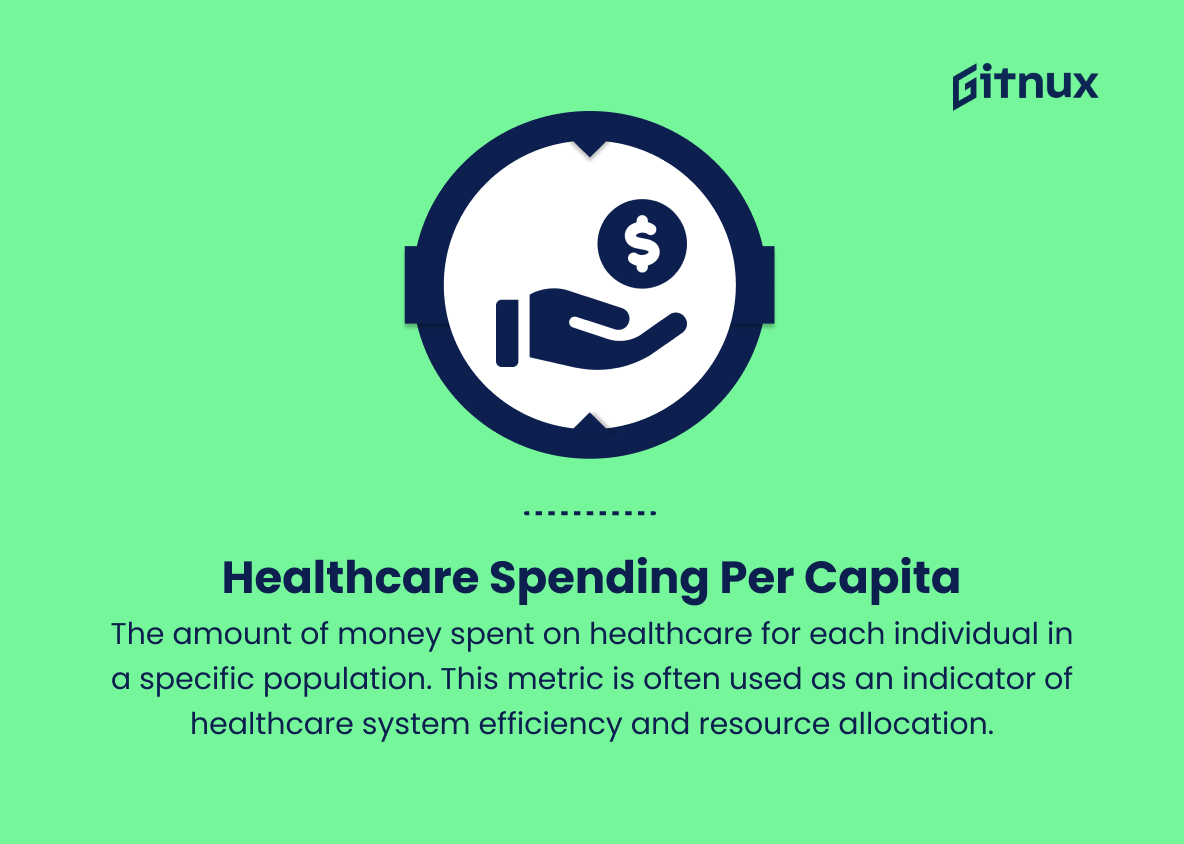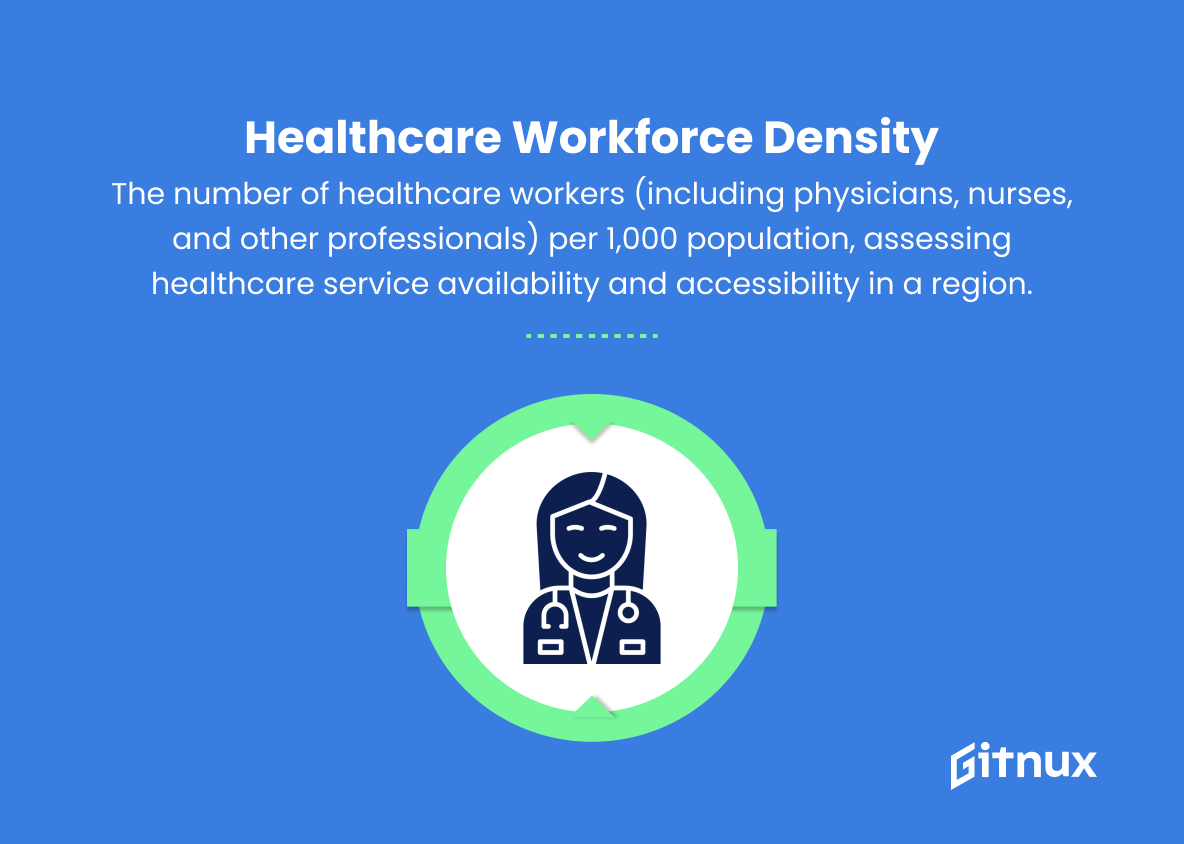Healthcare metrics are crucial for optimizing patient outcomes and resource utilization. They help assess treatment efficacy and efficiency, drive improvements in healthcare, and support data-driven decision-making. In this blog post, we explore their pivotal role in shaping the future of healthcare and the challenges in collecting and applying such data. Our goal is to enhance patient care and streamline healthcare operations for a healthier world.
Healthcare Metrics You Should Know
1. Mortality rate
This metric measures the number of deaths in a specific population over a specific time period. It is often expressed per 1,000 or 100,000 individuals and is commonly used to indicate the overall health of a population.
2. Life expectancy
This figure represents the average number of years a person is expected to live given their current age and demographic factors. Life expectancy is a key indicator of overall population health and healthcare system performance.
3. Infant mortality rate
The number of infant deaths (less than one-year-old) per 1,000 live births. This metric is often used as an indicator of maternal and child health, as well as healthcare system effectiveness.
4. Maternal mortality rate
The number of maternal deaths per 100,000 live births. This metric is used to measure the quality of prenatal and maternal care and is a key indicator of women’s health.
5. Readmission rate
The percentage of patients who are readmitted to a healthcare facility within 30 days of their discharge. Readmission rates can be an indicator of the quality of care received during their initial stay, as well as the effectiveness of post-discharge care.
6. Hospital-acquired infections (HAIs)
These are infections that patients acquire during their stay in a healthcare facility. HAI rates are a measure of patient safety, infection control, and overall quality of care in hospitals.
7. Emergency department (ED) wait times
The average amount of time a patient spends waiting to be seen by a medical professional in the emergency department. ED wait times are often used as an indicator of hospital efficiency and patient satisfaction.
8. Patient satisfaction scores
These scores are derived from surveys that assess a patient’s overall experience with their healthcare provider or facility. Higher patient satisfaction scores are associated with better quality of care and improved patient outcomes.
9. Preventable hospitalizations
Hospitalizations that could have been avoided through timely and effective primary care. This metric is considered an indicator of the accessibility and quality of primary care services in a community.
10. Vaccination coverage
The percentage of a target population that has been vaccinated against specific diseases (e.g., measles, influenza). High vaccination coverage is an important factor in preventing the spread of infectious diseases and maintaining population health.
11. Healthcare spending per capita
The amount of money spent on healthcare for each individual in a specific population. This metric is often used as an indicator of healthcare system efficiency and resource allocation.
12. Healthcare workforce density
The number of healthcare workers (including physicians, nurses, and other healthcare professionals) per 1,000 population. This metric helps to assess the availability and accessibility of healthcare services in a given region.
Healthcare Metrics Explained
Healthcare metrics are essential for understanding the overall health of a population, healthcare system performance, and the effectiveness of interventions. Key indicators include mortality rate, life expectancy, infant and maternal mortality rates, readmission rates, hospital-acquired infections, emergency department wait times, patient satisfaction scores, preventable hospitalizations, vaccination coverage, healthcare spending, and workforce density. These metrics provide insights into a healthcare system’s strengths and weaknesses, guide improvements, and enhance patient outcomes and overall health.
Conclusion
Healthcare metrics are vital for monitoring and improving healthcare quality, efficacy, and efficiency. Advanced technology and data analytics are necessary to track and evaluate these metrics, especially as the world faces ongoing challenges in delivering high-quality care to a diverse population.
By promoting evidence-based practices, transparency, continuous learning, and accountability, healthcare metrics create a culture that supports effective healthcare services for all. Incorporating these metrics into healthcare provision is an investment in present and future generations’ health and well-being.
